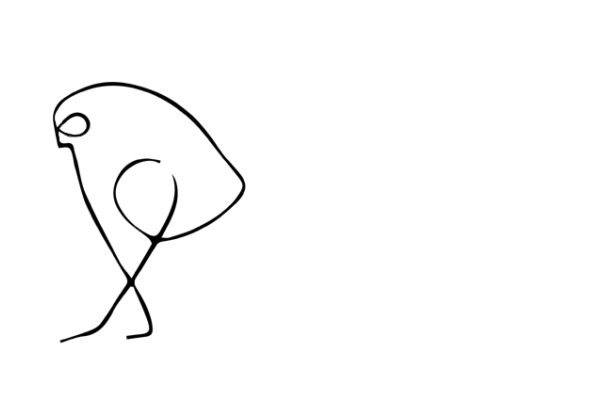
Over the past couple of years, I’ve twice shared my priorities for personal development publicly – partly thinking my reflections might be useful to others, but mostly acting out of a belief that it would be useful to me to publicly state my commitments. In “Three Lines to a Bird,” I describe the importance of distilling my work down to the essential elements, inspired by how Picasso conveyed a bird with three lines. In “What I Need to Learn Next,” I outline a focus on two micro-priorities – keeping an equilibrium between what I put on my list and what I do each week, and avoiding small episodes of impatience – that felt like vehicles for practicing how to keep raising my level of intentionality in my work more broadly:
- By stepping away from reacting to a person/situation at hand to decide how I want to engage – with true intentionality, I’d almost never choose impatience
- By making clear, intentional decisions about whether I’m committing to do or not committing to do something on my list
As I step back and take stock, I feel I’ve made good progress on distilling my work down to its essence. I may never reach a Picasso-esque “three lines to a bird,” but I’m using fewer lines than I ever have, and conveying “bird” more vividly. Since writing that post, my wife and I have had two children – Minh is now one and a half, and Henry just reached six months – and I’ve found that by focusing hard on “three lines” I can touch the firm’s many clients and ventures in ways that count, make more progress on conceptual innovation and writing than I have since I was a student, and make it home by 6pm to play with my kids and be part of their bedtimes on most days.
During this same time, I’ve made some but limited progress on “biting off just the amount I can chew” in terms of weekly to-dos and almost none on eliminating impatience. Why would that be? To consistently do what we intend to do, there needs to be some way we encode that intention. That encoding can take many forms: for instance, a touchstone thought that regularly gets summoned up (“how many lines?”), a habit, a ritual, or an internalized skill. Two particular forms of encoding that have been important to how I’ve made progress on “three lines” are:
- Focusing on solving specific “questions at hand” at a more general level. Most of what business throws at us appears in a highly specific form – e.g., what do we do in response to this request for proposal, what should I say in this person’s mid-year review, how do we help a founder we’re working with who just had a bad conversation with one of his key investors? Dealing with something well in that form and at that level doesn’t necessarily create a lot of leverage. Abstracting up to “what kind of situation is this, and is there a powerful way to deal with this whole class of situations” creates a lot of leverage, so long as that abstraction connects concretely back down to the specific demands of the situation at hand.For instance, several months ago two clients in very different fields – a growing non-profit and a division of a large financial company – had made critical progress in aligning on strategy and translating strategy into key initiatives. It occurred to me that both clients faced versions of the very general question “how does a leadership team drive and oversee the execution of a strategy?” Rather than just zoom in on what either organization should do, I stepped back and developed a way of breaking down the different moving parts of overseeing execution of any strategy. I then used that framework to write two different, deeply client-specific working documents for these two organizations. Engaging with those two clients then felt more like helping them internalize a way of thinking about their road ahead, rather than just grappling with specifics. When recently a CEO of a prospective new client reached out about strategy execution, it wasn’t hard to have a short conversation with her about her context, read a set of strategy documents her team had developed and then use insights about the “general case” of strategy execution to drive to some very specific questions and areas to probe about this client’s specific situation. The client found this first perspective we shared back with her uncannily relevant to her situation – but all the specificity she experienced flowed from the time spent reflecting on the more general problem.
- Differentiating between the role of sponsor, who delegates a goal, and owner, who shapes the path to achieve the goal. In the course of intellectually demanding work, it can be easy to lose sight of the basics of effective management. There’s a tremendous difference between getting leverage – someone helps me on work where I remain the owner – and delegating ownership of a distinct brief to a team member. Theoretically, there’s greatest leverage from the latter, if the owner can actually achieve the goal. In a consulting or venture firm, the senior partner is frequently the person best able to do the specific thinking or relationship building work associated with the most important outcomes. It’s a difficult art to honor this without getting sucked into micromanaging or into simply doing too much (e.g., work in which one has an absolute advantage but not a comparative advantage, to use the language of economists).I’ve found that four areas are particularly valuable to work on in terms of deliberately navigating sponsor and owner roles in the difficult, nuanced kinds of work that take most of my attention:
- Separating out the sponsor role, where I’m monitoring and probing to make sure we’re on track to achieve the goal, from where the owner is bringing me in to engage with them on problem solving
- Getting clear with the owner where it makes sense to bring me in as a “player on the field,” and ensuring when this happens, that’s its own clearly delineated brief with a defined end-point
- Focusing on the “right size chunk” of a bigger goal that could be given to someone else to own. Often in a complex/difficult situation, it is hard to hand to a less senior person the responsibility to get all the way to the “big goal,” but there is an intermediate goal, significant enough to matter, that can effectively be delegated. It’s a trap to take a black and white view of either delegating the big goal or not really delegating at all and staying the owner while everyone else just contributes. With enough high quality attention I can delegate one “right size chunk,” then another, then another, using what’s learned in each smaller journey to carve out work that’s at just the right challenge level for someone on my team
- Acknowledging up front where I simply am the natural owner, and then designing the work so that I can do it in the most elegant way, with the least work beyond what’s required to achieve the goal.
The priorities I decided to focus on last year – biting off just the amount of work I’d actually be able to do, and dramatically reducing impatience with others in the course of my work – have proven much harder to encode. I believe the difference relates to how naturally each priority fits into the flow of thinking involved in doing specific pieces of work throughout each day.
Choosing a weekly list of outcomes/actions to complete involves stepping outside the flow of work to make a decision about what to take on. Revising that list as conditions change requires stepping outside dealing with those changing conditions to address a different topic: the topic of my own agenda. This work of making sure that my agenda and my capacity stay closely in line pulls me away from the grain of my focus on solving for specific problems and opportunities as each day unfolds.
Working on impatience is still harder. To see why, it is helpful to look through the lens of the late Colonel John Boyd’s framework of OODA – observe, orient, decide, act. Much of what I describe in terms of positive trajectory of development above flows from careful ways of orienting. As I move through my day, I’m able to orient in a way that’s informed by a pattern like “solve for the general case” or “playing the sponsor role,” which then primes certain kinds of decisions that are in line with my developmental path. Impatience is a form of disorientation. Observation connects to an emotional response that flows through a quick channel into action – or an inflection of action, a tone – without a slow, conscious decision to engage that way. To overcome that kind of transmission, one needs to have a fast, tight connection between self-observation – “I’m slipping in this particular way” – orienting to this emotional dynamic, making a micro-decision to arrest the slip into impatience, and staying present to make sure this reorienting sticks. I imagine this as being something like the way we’ve all learned to stabilize ourselves when stumbling over an object. Perhaps it could become equally automatic; perhaps in some people it is.
Encoding Through Teaching
In a recent development conversation with my colleague Shanti Nayak, she remarked that it was a kind of luxury for me to focus on the further refinement of my own way of operating, and that at this point it was much more important for me to focus on the development of others.
Reflecting since this meeting, I believe there is a synthesis of what my areas of development focus have been and what Shanti’s challenge implies they could be. As Incandescent grows, and as my own potential to advance my work grows, “three lines to a bird” represents a lasting imperative – understood in an expansive sense that includes the ever-present question of “which bird to draw.” Getting closer to this ideal requires becoming a better teacher: zooming in faster on the teachable essence underneath the situation at hand, and engaging others in a way that not only helps them meet the intellectual and emotional demands of the situation, but establishes a pattern (a way of seeing, a way of engaging) that applies more broadly. Doing this with any consistency creates bird after bird from very few lines indeed.
I’m still just beginning to think through what this focus on being a better teacher entails. I believe it includes:
- Shaping my work more around beliefs about what would be the most valuable to be able to teach – including asking what it will take to more fully learn those lessons myself
- Regularly looking at the landscape of my day-to-day work and asking where there are opportunities to teach – by which I mean not only instructing in a narrow sense, but more broadly creating a context for learning
- Improving my craft as a teacher, through different mediums: in the course of advising, in collaborative work with colleagues, in meetings dedicated to reflection and development, through writing, “at the front of the room” with groups, and so on
- Learning better how to better see and shape my own OODA loops, in ways that also strengthen my ability to help others shift this often invisible fabric of how they operate
None of this implies a shift in the “business I’m in.” I’m not seeking to become a business school professor or an executive coach. We’ve designed Incandescent to bring together theory and practice in the real work of creating, building, running and changing enterprises, both in the business and the social sectors. That creates a rich, varied canvas on which we work. Andy Grove, “Dr. V” of Aravind and Jacqueline Novogratz — to use three very different examples I’ve referenced at different times in On Human Enterprise – exemplify leadership enacted through teaching, with no hint of retreat from “the arena” of leadership.
Nothing I’ve written here represents a radical shift in emphasis. Many of the reflections I’ve shared in this blog, ranging from “On Hiring Well” to “Living Two Stories” (a piece on how to move forward when one doesn’t really know what one wants), are embodiments of just the kind of focus I’m resolving to adopt more strongly. Development is rarely a matter of reversal. Development happens as we clarify focus, train ourselves to raise the quality of our attention, practice more often and more rigorously and accelerate progress in some pivotal area. I have my work cut out for me.


